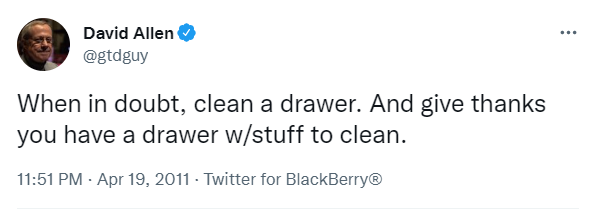3 Steps to Declutter, Simplify, and Find Peace of Mind
While you don’t need to wait until you retire to declutter, simplify, and find the peace of mind that comes from a house free of unwanted items, retirement is a great time to finally tackle the decluttering process.
Why?
Because unless you’ll be traveling a lot, you’ll likely be spending a lot more time at home. Surface clutter can take its toll on you, both mentally and physically.
Even if you aren’t anywhere close to retiring yet, decluttering your living space is a great time investment that can actually save you money in the long run!
Let’s discuss some benefits of decluttering.
This post may contain affiliate links where I make a commission on your purchases at no additional cost to you. As an Amazon Associate, I earn from qualifying purchases. For more details, please see Affiliate Disclosure.

The Benefits of Decluttering and Simplifying
Decluttering has some amazing benefits, both physical and mental.
From a physical perspective, the fewer things you have in your home, the easier it is to clean. There are fewer places for dust, mold, and other allergens to form in your living space. This can help reduce asthma and other respiratory issues that can take a toll on your health.
Additionally, when your kitchen is tidy, it’s so much easier to prepare healthy meals at home. A decluttered kitchen also makes cooking in it more enjoyable, resulting in fewer pricey, greasy takeout meals and more healthy, inexpensive meals at home.
From a mental perspective, physical clutter can lead to feelings of being out of control. Having a clean and orderly house can reduce stress, curb anxiety, and help improve focus.
When you get your clutter under control, you gain confidence in your ability to build a more intentional life.
Focus On Decluttering First, Then Organize
Trying to organize before you get rid of items you no longer need or want isn’t going to do much except move things around. It can also cost you money if you invest in containers, file cabinets, and the like to get things organized because you may end up buying more than you actually need.
The key is to remove things first and then you can organize the things you decide to keep. Organizing without decluttering first is only a temporary solution.
Where Do I Even Start to Declutter and Simplify?
If the thought of tackling the entire house looking for things to throw out overwhelms you, you’re not alone. In fact, it’s why most people never start the decluttering process to begin with.
The trick is to break down the process and gain some momentum.

Step 1: Do an Independent Assessment
Start With a List
Step back and examine your home and belongings from an impersonal perspective. Pretend you’re a visitor with no sentimental attachments to your home or its contents.
Grab a clipboard and tour your home room by room, making a list of any items you can get rid of. You don’t need to make any hard decisions right now. You’re really just looking for possible things to purge.
Be sure to go through:
- kitchen and bathroom cabinets
- drawers (yup, that junk drawer too!)
- pantry
- closets
- corners (you know what I mean; those “I’ll just put this here for now” spots)
- bookshelves
- table tops
- garage
- shed
If you’re having trouble being objective, try enlisting a trusted friend to help you, even if it’s via Facetime. Be open to their suggestions, though! If you immediately push back at every suggestion, they may stop making suggestions, which defeats the purpose of asking for help.
In your initial walkthrough of your home, don’t be afraid to write down any maintenance items you notice. It’s important to note these as well is because once you’ve seen them, your mind knows they need attention. Writing things like this down lets your brain know that you’re aware of them and will address them later, at an appropriate time. Leaving these things floating around in your mind can lead to overwhelm. Remember, this process is about decluttering your mind, too!

Step 2: Assign a “Workload Value” to Each Item on Your List
Now that you’ve done an initial assessment of your decluttering “scope of work” (the amount and types of items you’ll be considering), the next step is to decide where start.
While it might be tempting to write “pantry purge” or “closet cleanout” on your to-do list, these are very broad, vague, and overwhelming ways to frame large tasks like these. Scheduling these tasks would be practically impossible because your brain will think, “I’m going to need a LOT of time for this!”
Instead, break down “pantry purge” and “closet cleanout” into more manageable chunks that make it easier to schedule.
For example, instead of creating a single “pantry purge” task on your to-do list, break it down into smaller sub-tasks:
- throw out old herbs and spices
- check for expired dried goods (beans, pasta, rice)
- check expiration dates on jars
You’re much more likely to get your “pantry purge” completed by scheduling manageable blocks of time for these smaller tasks than if you waited until you could plan out one big, overwhelming chunk of time to declutter your entire pantry.
I find it helpful (and motivating!) to create fun labels for task types depending on their complexity and on the time needed to complete them. For example, here is how I classify my own tasks:
- A ‘Walk-Around-the-Block’ task – a task that will take less than two hours, and all the work is within my control.
- A 5k task – a task that will take about 4 hours (half a day) to complete. It may require some basic supplies (from a hardware store, etc.), but I can complete it on my own.
- A 10k task –a task that can take a full day (about 8 hours) and may need to be broken down into several sub-tasks. Some aspects may require assistance (another pair of hands to help move things, etc.). This type of task may require supplies such as:
- plastic containers
- glass jars
- storage bins
- A Marathon task – This type of task will take multiple days to complete. It should definitely be broken down into sub-projects/tasks.
This task naming convention is just one fun technique I use to help me break down the work ahead of me. You can adopt this one or create one to fit your personality!
Step 3: Schedule Decluttering Sessions
As Napoleon Hill said, “A goal without a deadline is just a dream.”
Now that you have a detailed list of what needs to be done and a better understanding of how long it will take to do it, it’s time to start scheduling the time to get it done.
In step two you gained a better understanding of how long your tasks and sub-tasks will take, which should now make it easier for you to plug the time into our calendar.
It doesn’t matter if your decluttering sessions need to be moved if things come up. The key is to be intentional about creating the time on your schedule. Otherwise, your dream of a more enjoyable clutter-free home is just that…a dream.
If you need help, please be sure to check out my Guide to Block Planning to learn how to use the block planning technique to get things done.
What To Do With Your Unwanted Items
As you start to declutter your home, remove the items you no longer want as soon as possible so that you’re clearing space and seeing the results of your work. Boxing them up but then stacking the full boxes in a corner or in the garage isn’t going to help…the things are still in your house!
Rather than simply throwing away your items, please consider donating what you can to local charities and animal shelters. A garage sale is also a great way to get rid of things and make some extra cash besides. Check out this post for more tips on transitioning your closet from work clothes to retirement wear.

Congratulations on getting started with decluttering. Don’t be discouraged if the process takes a while to complete. Just be sure to keep scheduling blocks of time for your purge sessions as your schedule allows. Decluttering can be very therapeutic…once you’ve done a few sessions you may even find yourself looking forward to the next one!
I have lived in the same old house for a very long time and have brought up two kids here. A couple of my family members have an inherited resistance to letting go of anything, so I know all too well how daunting this list can look. Having a quality, tangible list and some structure to my time gives me confidence I can tackle this. I’m sure it will the do same for you.
“One of the things that gives me most peace is have a clean, simple home. When I wake up in the morning and walk out into a living room that has been decluttered, that has a minimalist look, and there isn’t junk lying around, there is a calm and joy that enters my heart. –Leo Babauta. Zen Habits
So go ahead, get your list done and then take that much deserved deep breath!
